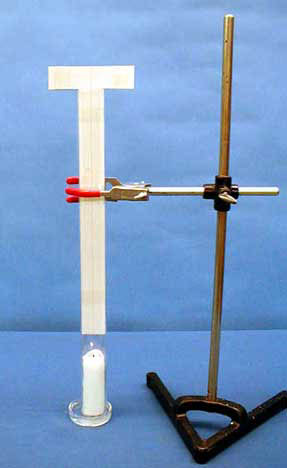Demos: 3C-02 Single Chimney

A burning candle is placed at the bottom of a tall, slender cylinder. A divider placed in the cylinder makes two separate channels side by side. Hot gases go up one side while cooler air comes down the other, maintaining the fresh oxygen supply. When the partition is removed, the convection paths are destroyed and the flame is smothered.
Directions: The candle sits in a basin of water. The chimney is lifted, the candle lighted, and the chimney is set back down, the water sealing the base. Be sure the divider is in the cylinder. The candle flame will flicker, indicating some turbulence resulting from the convection, but the candle will continue to burn. Now pull out the divider and within seconds the flame will be extinguished.
Suggestions for Presentation: Ask the students what is required for a candle to continue burning. How can fresh (oxygenated) air get to the candle flame when there are currents going both up and down in the same restricted area? If you lift the chimney until the base is out of the water, the flame will continue to burn because you now have a different path for the cooler air. This is the fireplace effect.
Applications: Fireplaces; natural convection in houses, etc.
Last Updated: Nov 30, 2023 11:25 AM